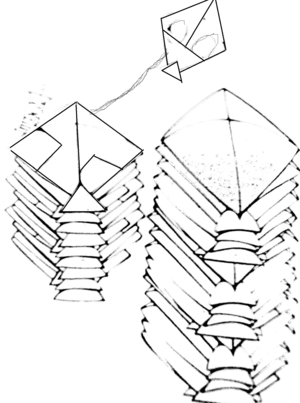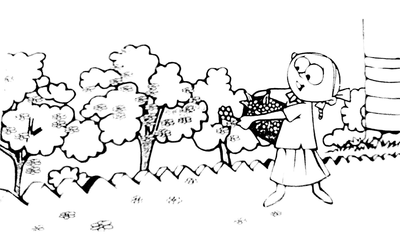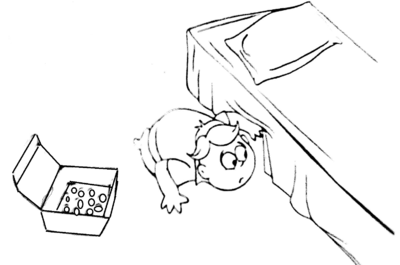Difference between revisions of "TIIE-Endline Mathematics activity"
| (6 intermediate revisions by the same user not shown) | |||
| Line 17: | Line 17: | ||
# Add the first set of numbers | # Add the first set of numbers | ||
# Subtract the second set of numbers *student can choose to do in any method, not necessarily FLU | # Subtract the second set of numbers *student can choose to do in any method, not necessarily FLU | ||
| − | + | '''Rubric to assess:''' | |
{| class="wikitable" | {| class="wikitable" | ||
| colspan="3" |'''Smallest and Largest''' | | colspan="3" |'''Smallest and Largest''' | ||
| Line 41: | Line 41: | ||
number and also explain why it is the largest | number and also explain why it is the largest | ||
|} | |} | ||
| + | '''Rubric to assess:''' | ||
{| class="wikitable" | {| class="wikitable" | ||
| colspan="4" |'''Addition and Subtraction''' | | colspan="4" |'''Addition and Subtraction''' | ||
| Line 62: | Line 63: | ||
=== '''Word problems''' === | === '''Word problems''' === | ||
| − | Addition number sets: '''(74, 17), (75, 16), (77, 14)''' | + | Addition number sets: '''(74, 17), (75, 16), (77, 14)''' |
| + | {| class="wikitable" | ||
| + | |+ | ||
| + | ![[File:Word problem picture1.png|left|thumb|400x400px]]ರವೀನ ಮತ್ತು ರಾಮು ಮಾವಿನ ಮರದಿಂದ ಹಣ್ಣುಗಳನ್ನು ಕಿತ್ತುತ್ತಿದ್ದರು. ರವೀನಾಗೆ __ ಮಾವಿನ ಹಣ್ಣುಗಳು ಸಿಕ್ಕಿತು. ಮತ್ತು ರಾಮುಗೆ __ ಹಣ್ಣುಗಳು ಸಿಕ್ಕಿತು. ಹಾಗಾದರೆ ಇಬ್ಬರು ಮನೆಗೆ ಎಷ್ಟು ಹಣ್ಣುಗಳನ್ನು ತೆಗೆದುಕೊಂಡುಹೋದರು? | ||
| + | ![[File:Word problem picture2.png|left|thumb]]ಒಂದು ಅಂಗಡಿಯಲ್ಲಿ ಗಾಳಿಪಟಗಳನ್ನು ಎರಡು ರಾಶಿಗಳಲ್ಲಿ ಇಡಲಾಗಿದೆ. ಒಂದು ರಾಶಿಯಲ್ಲಿ __ಗಾಳಿಪಟಗಳಿವೆ ಮತ್ತು ಇನ್ನೊಂದು ರಾಶಿಯಲ್ಲಿ __ ಗಾಳಿಪಟಗಳಿವೆ. ಹಾಗದರೆ, ಅಂಗಡಿಯಲ್ಲಿ ಒಟ್ಟಾಗಿ ಎಷ್ಟು ಗಾಳಿಪಟಗಳಿವೆ? | ||
| + | |} | ||
| + | Subtraction number sets: '''(63, 16), (75, 18), (42, 17)''' | ||
| + | {| class="wikitable" | ||
| + | |+ | ||
| + | ![[File:Subtraction word problem picture1.png|left|thumb|400x400px]]ರೀನ ತೋಟದಲ್ಲಿ ಹೂಗಳನ್ನು ಕಿತ್ತುತ್ತಿದ್ದಾಳೆ. ಗಿಡದಲ್ಲಿ __ ಮಲ್ಲಿಗೆ ಹೂಗಳಿವೆ ಮತ್ತು __ಹೂಗಳು ನೆಲದ ಮೇಲೆ ಬಿದ್ದಿವೆ. ಹಾಗಾದರೆ, ಒಟ್ಟಾಗಿ ಎಷ್ಟು ಹೂಗಳಿವೆ? | ||
| + | ![[File:Subtraction word problem picture2.png|left|thumb|400x400px]]ರಾಮು ಎಂಬುವವನ ಬಳಿ ಒಂದು ಡಬ್ಬದಲ್ಲಿ __ ಗೋಲಿಗಳಿದ್ದವು. ಆ ಗೋಲಿಗಳು ನೆಲದ ಮೇಲೆ ಚೆಲ್ಲಿಹೋದವು, ಅವನು ಹೇಗೋ ಮಾಡಿ __ ಗೋಲಿಗಳನ್ನು ಹುಡುಕಿದನು. ಹಾಗಾದರೆ ಎಷ್ಟು ಗೋಲಿಗಳು ಕಾಣೆಯಾಗಿವೆ? | ||
| + | |} | ||
| + | '''Process:''' | ||
| − | + | 1. Let the child choose one of the two pictures. | |
| + | |||
| + | 2. For the chosen picture, choose one of the given set of numbers and read out the corresponding problem statement to them replacing the blanks with the numbers chosen by you. | ||
| + | |||
| + | 3. Then ask them to solve it on a sheet of paper. | ||
| + | |||
| + | 4. If they ask for it to be repeated, read it out again. | ||
| + | |||
| + | 5. After they have written it down and solved it, ask them what the 2 numbers mean and how did they solve it/why did they choose the particular operation (addition/subtraction) | ||
| + | |||
| + | 6. Note: Facilitator should not tell the student which operation is to be done. | ||
| + | |||
| + | '''Rubric to assess:''' | ||
{| class="wikitable" | {| class="wikitable" | ||
|1 | |1 | ||
| Line 78: | Line 103: | ||
=== '''Conversation''' === | === '''Conversation''' === | ||
| + | 1. Have the following conversation with the student: | ||
| + | |||
| + | “Imagine there are 3 bunches of Rs.100 notes, Rs.10 notes and Re.1 coins. If you were to take Rs.345 from the bunches, how many of each would you pick?” | ||
| + | |||
| + | “If I now gave you another Rs.78, how much would you now have?” | ||
| + | |||
| + | “With this money now, if you went to buy a toy which costs Rs. 380, how much would be left with you? Which notes and coins?” | ||
| + | |||
| + | 2. Note: Students can solve mentally if they can, else can write down on paper and solve it. | ||
| + | |||
| + | 3. Students can be prompted to use their hands/draw/FLU model to solve if necessary. | ||
| + | |||
| + | 4. Do not correct the child if they respond incorrectly. Continue the conversation and ask them if they can draw it and show. | ||
| + | |||
| + | 5. Make note of whether the child calculated mentally, used FLU model, their hands, drawing, numerals, etc. | ||
| + | |||
| + | |||
| + | '''Rubric to assess:''' | ||
| + | |||
“Maneli ond 100 Rs notes bundle, ond 10 rs notes bundle matte ond 1 Re coins bundle ide. Amma/Appa/Akka adrinda ___Rs togond baa andre, yav yav notes matte coins togond hogtya? | “Maneli ond 100 Rs notes bundle, ond 10 rs notes bundle matte ond 1 Re coins bundle ide. Amma/Appa/Akka adrinda ___Rs togond baa andre, yav yav notes matte coins togond hogtya? | ||
| Line 99: | Line 143: | ||
| − | + | Make students sit in groups of 4 and ask them to choose 2 numbers from 1-9. Ask students to write the 2 numbers in a multiplication expression and represent the multiple factors in pictorial form (using objects like pens, pencils, flowers, balls, chocolates, etc.) and write the answer for that. Ask them to roll the dice twice, write down the numbers and multiply using the area/box method or regular method for double-digit multiplication. | |
| − | |||
| − | |||
| − | + | '''Rubric to assess understanding of multiplication''' | |
| + | {| class="wikitable" | ||
| + | | colspan="2" |'''Single digit Multiplication''' | ||
| + | |- | ||
| + | |1 | ||
| + | |Unable to solve/does not attempt | ||
| + | |- | ||
| + | |2 | ||
| + | |Able to do the representation using drawing | ||
| + | |- | ||
| + | |3 | ||
| + | |Directly writes the answer | ||
| + | |} | ||
| + | {| class="wikitable" | ||
| + | | colspan="2" |'''Double digit Multiplication''' | ||
| + | |- | ||
| + | |1 | ||
| + | |Unable to solve | ||
| + | |- | ||
| + | |2 | ||
| + | |able to solve partially | ||
| + | |- | ||
| + | |3 | ||
| + | |able to solve by area model | ||
| + | |- | ||
| + | |4 | ||
| + | |able to solve regular method | ||
| + | |} | ||
[[Category:TIIE Mathematics]] | [[Category:TIIE Mathematics]] | ||
Latest revision as of 08:33, 23 March 2023
Representation and operation ()
Set-1 digits are 1, 2, 3, 4, 5
Set-2 digits are 5, 6, 7, 8, 9
Set-3 digits are 1, 4, 6, 7, 8, 9
- Pick 2 chits from set 1 and 2 > make the smallest number > write it down
- Pick 3 chits from the 3rd bowl > make the smallest number > write it down
- Ask why they are the smallest possible numbers
- Represent both the numbers in FLU model
- Put the chits back in the bowls
- Pick 2 chits from set 1 and 2 > make the largest number possible >write it down
- Pick 2 chits from the 3rd bowl > give 0 digit to child > make the largest number > write it down
- Ask why they are the largest possible numbers
- Ask student to represent both the numbers in concrete FLU model
- Add the first set of numbers
- Subtract the second set of numbers *student can choose to do in any method, not necessarily FLU
Rubric to assess:
| Smallest and Largest | ||
| 1 | 2 | 3 |
| Unable to construct the smallest number using the digits picked and unable solve the operation | Able to construct the smallest
number but unable to explain why it is the smallest |
Able to construct the smallest
number and also explain why it is the smallest |
| Unable to construct the largest number using the digits picked and unable solve the operation | Able to construct the largest
number but unable to explain why it is the largest |
Able to construct the largest
number and also explain why it is the largest |
Rubric to assess:
| Addition and Subtraction | |||
| 1 | 2 | 3 | 4 |
| Unable to solve the addition | Able to partially solve the addition (parts which don’t need carry-over) | Able to solve using FLU model but not using regular method | Able to solve directly using the regular method |
| Unable to solve the subtraction | Able to partially solve the subtraction (parts which don’t need regrouping | Able to solve using FLU model but not using regular method | Able to solve directly using the regular method |
If the child is unable to do the above activity, only then do the money conversation, else only do the word problems.
Word problems
Addition number sets: (74, 17), (75, 16), (77, 14)
| ರವೀನ ಮತ್ತು ರಾಮು ಮಾವಿನ ಮರದಿಂದ ಹಣ್ಣುಗಳನ್ನು ಕಿತ್ತುತ್ತಿದ್ದರು. ರವೀನಾಗೆ __ ಮಾವಿನ ಹಣ್ಣುಗಳು ಸಿಕ್ಕಿತು. ಮತ್ತು ರಾಮುಗೆ __ ಹಣ್ಣುಗಳು ಸಿಕ್ಕಿತು. ಹಾಗಾದರೆ ಇಬ್ಬರು ಮನೆಗೆ ಎಷ್ಟು ಹಣ್ಣುಗಳನ್ನು ತೆಗೆದುಕೊಂಡುಹೋದರು? | ಒಂದು ಅಂಗಡಿಯಲ್ಲಿ ಗಾಳಿಪಟಗಳನ್ನು ಎರಡು ರಾಶಿಗಳಲ್ಲಿ ಇಡಲಾಗಿದೆ. ಒಂದು ರಾಶಿಯಲ್ಲಿ __ಗಾಳಿಪಟಗಳಿವೆ ಮತ್ತು ಇನ್ನೊಂದು ರಾಶಿಯಲ್ಲಿ __ ಗಾಳಿಪಟಗಳಿವೆ. ಹಾಗದರೆ, ಅಂಗಡಿಯಲ್ಲಿ ಒಟ್ಟಾಗಿ ಎಷ್ಟು ಗಾಳಿಪಟಗಳಿವೆ? |
|---|
Subtraction number sets: (63, 16), (75, 18), (42, 17)
| ರೀನ ತೋಟದಲ್ಲಿ ಹೂಗಳನ್ನು ಕಿತ್ತುತ್ತಿದ್ದಾಳೆ. ಗಿಡದಲ್ಲಿ __ ಮಲ್ಲಿಗೆ ಹೂಗಳಿವೆ ಮತ್ತು __ಹೂಗಳು ನೆಲದ ಮೇಲೆ ಬಿದ್ದಿವೆ. ಹಾಗಾದರೆ, ಒಟ್ಟಾಗಿ ಎಷ್ಟು ಹೂಗಳಿವೆ? | ರಾಮು ಎಂಬುವವನ ಬಳಿ ಒಂದು ಡಬ್ಬದಲ್ಲಿ __ ಗೋಲಿಗಳಿದ್ದವು. ಆ ಗೋಲಿಗಳು ನೆಲದ ಮೇಲೆ ಚೆಲ್ಲಿಹೋದವು, ಅವನು ಹೇಗೋ ಮಾಡಿ __ ಗೋಲಿಗಳನ್ನು ಹುಡುಕಿದನು. ಹಾಗಾದರೆ ಎಷ್ಟು ಗೋಲಿಗಳು ಕಾಣೆಯಾಗಿವೆ? |
|---|
Process:
1. Let the child choose one of the two pictures.
2. For the chosen picture, choose one of the given set of numbers and read out the corresponding problem statement to them replacing the blanks with the numbers chosen by you.
3. Then ask them to solve it on a sheet of paper.
4. If they ask for it to be repeated, read it out again.
5. After they have written it down and solved it, ask them what the 2 numbers mean and how did they solve it/why did they choose the particular operation (addition/subtraction)
6. Note: Facilitator should not tell the student which operation is to be done.
Rubric to assess:
| 1 | 2 | 3 | 4 |
| Unable to identify the operands even after hearing the problem statement 2 or 3 times | Identifies the operands but not the right operation | Identifies the operands and the right operation but unable to solve it correctly | Identifies the operands from the problem statement and solves the operation correctly |
Conversation
1. Have the following conversation with the student:
“Imagine there are 3 bunches of Rs.100 notes, Rs.10 notes and Re.1 coins. If you were to take Rs.345 from the bunches, how many of each would you pick?”
“If I now gave you another Rs.78, how much would you now have?”
“With this money now, if you went to buy a toy which costs Rs. 380, how much would be left with you? Which notes and coins?”
2. Note: Students can solve mentally if they can, else can write down on paper and solve it.
3. Students can be prompted to use their hands/draw/FLU model to solve if necessary.
4. Do not correct the child if they respond incorrectly. Continue the conversation and ask them if they can draw it and show.
5. Make note of whether the child calculated mentally, used FLU model, their hands, drawing, numerals, etc.
Rubric to assess:
“Maneli ond 100 Rs notes bundle, ond 10 rs notes bundle matte ond 1 Re coins bundle ide. Amma/Appa/Akka adrinda ___Rs togond baa andre, yav yav notes matte coins togond hogtya?
Matte inna ___ Rs appa/akka/anna kotre, aur hatra yesht agatte oTTu?
Eega adarinda ninge auru ___ Rs angadi inda yeno samaanu tarakke kotre, aur hatra yeshtu uLiyutte?”
| 1 | 2 | 3 | 4 |
| Unable to correctly tell the combination of denominations corresponding to the number and unable to solve the operations | Able to correctly tell the combination of denominations corresponding to the number but unable to perform the operations | Able to correctly tell the combination of denominations corresponding to the number and solve the addition but not subtraction | Able to correctly tell the combination of denominations corresponding to the number and solve both addition and subtraction |
Multiplication
Make students sit in groups of 4 and ask them to choose 2 numbers from 1-9. Ask students to write the 2 numbers in a multiplication expression and represent the multiple factors in pictorial form (using objects like pens, pencils, flowers, balls, chocolates, etc.) and write the answer for that. Ask them to roll the dice twice, write down the numbers and multiply using the area/box method or regular method for double-digit multiplication.
Rubric to assess understanding of multiplication
| Single digit Multiplication | |
| 1 | Unable to solve/does not attempt |
| 2 | Able to do the representation using drawing |
| 3 | Directly writes the answer |
| Double digit Multiplication | |
| 1 | Unable to solve |
| 2 | able to solve partially |
| 3 | able to solve by area model |
| 4 | able to solve regular method |



